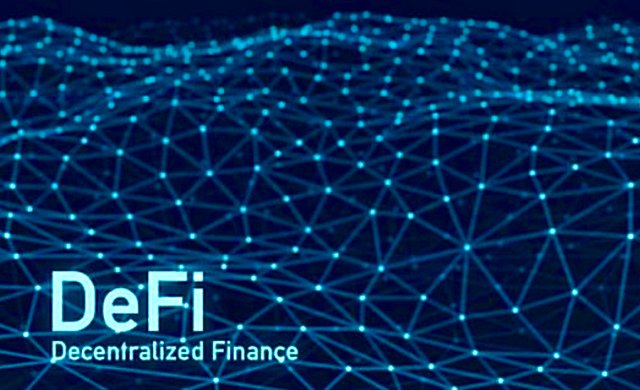I have been studying “decentralized finance” for several months, trying to determine why there’s so much excitement over it and how it differs from traditional finance. I found during this exploration that decentralized finance is a lot like cryptocurrency and the blockchain, in that to understand what it is and why it may be better then the current system you must study or review what you know about the current system as a first step. I also learned that just like my initial study of cryptocurrency and the blockchain, my initial readings on decentralized finance were filled with unfamiliar and undefined terms like tokenization, centralized debt products and a collateralization ratio.

I soon learned that my review of traditional financial terms allowed me to understand the new terms by defining them by comparison to older nouns and verbs from traditional finance. This made the reading and comprehension of DeFi project white papers understandable.I can also happily say, that by writing several posts on different DeFi projects and also reading and writing about the advantages and disadvantages of DeFi I developed a good understanding of the concept and some of the projects. Additionally the reverse engineering involved in incident analysis like hacks or malfunctions was also very helpful.
So now to the central questions: what is DeFi and how does it differ from traditional finance? DeFi is a set of complex financial tools, which include decentralized exchanges, centralized credit debit facilities and entities like securitization and tokenization platforms. Defi is different from traditional finance in that it crosses country borders, can be done anonymously and provides access to complex financial tools to earn money, which are frequently restricted to only accredited investors, which is frequently defined as having a lot of money.
When I looked into DeFi I saw decentralized exchanges or DEXs for short, where the trading of various cryptocurrency was to be done peer to peer without assistance of an intermediary. This allows cheaper trades by reducing or eliminating trading fees and greater security as you never give up control of your cryptocurrency to an exchange. Additional examples of DeFi include credit debt facilities like the MakerDao on Ethereum or Justy on Tron, where you can deposit cryptocurrency, take out loans, provide capitol for loans or deposit and stake cryptocurrency to profit from arbitrage, or interest payments. In traditional finance you have to be a qualified investor with a net worth of hundred of thousands of dollars to have access to these financial tools, but in DeFi the only qualification is to have capitol to invest. There are also securitization and Tokenization platforms as part of DeFi which allow you to take iliquid assets like real estate and art, represent them as digital securities and then sell fractions of the equity. This allows you to sell tokens for cash up to some predetermined fraction of total value, so you can maintain control of an asset by selling 49% of it and still have access to the equity as cash.
Once again, these types of transactions can allow access to final tools such as debt collateralization to people who wouldn't qualify for credit from traditional finance due to credit and accreditated investor rules, but here by securitizing or representing the asset as a digital token and providing ownership papers as a guarantee, non-accreddited investors with unfavorable credit histories can still access equity in illiquid assest and take out cash.
I hope you found this post useful and I would be happy to answer them in the comments below.
@shortsegments
It sounds like it's applying crypto technology to the whole finance sector
Downvoting a post can decrease pending rewards and make it less visible. Common reasons:
Submit